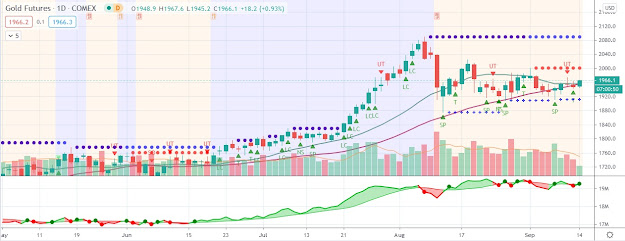Gold prices retreated on the back of a stronger U.S. dollar and weakness in the broader stock and commodity markets
 The gold price declined Friday morning, sinking $11.00 to $1,638.50 per ounce. Gold prices retreated on the back of a stronger U.S. dollar and weakness in the broader stock and commodity markets. The U.S. dollar climbed against the euro and commodity currencies such as the Canadian and Australian dollars.
The gold price declined Friday morning, sinking $11.00 to $1,638.50 per ounce. Gold prices retreated on the back of a stronger U.S. dollar and weakness in the broader stock and commodity markets. The U.S. dollar climbed against the euro and commodity currencies such as the Canadian and Australian dollars.While the gold price has faced many headwinds in recent months in the form of better than expected U.S. economic data, such was not the case on Thursday. Retail sales increased at the slowest pace in seven months, by 0.1%, compared to the 0.3% consensus estimate among economists. In addition, weekly jobless claims rose to 399,000, well above the 375,000 projected level. The two disappointing data points suggested that the U.S. economy may not be rebounding as quickly as previously anticipated. Moreover, the reports are likely to provide the Federal Reserve with further evidence to maintain its highly dovish stance on monetary policy.
Across the Atlantic, the gold price was the beneficiary of ongoing accommodative monetary policies from two other of the world’s largest central banks. The Bank of England held its main interest rate at a record low of 1.0% and cautioned that “We should be realistic about the risks; the uncertainty in the euro area continues to have a chilling effect on the UK as well as elsewhere.” Following the announcement, several analysts contended that the BOE will expand its £275 billion quantitative easing program by £50 billion at next month’s meeting.
As for the European Central Bank, it kept its benchmark interest rate at a record low of 1.0% following two consecutive reductions. ECB President Mario Draghi subsequently stated at his post-meeting press conference that “The monetary stance is and will remain accommodative. Uncertainty is very high. We will monitor all developments and stand ready to act.”



Comments
Post a Comment